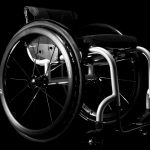According to evidence collected by the Spinal Cord Injury Rehabilitation Evidence (SCIRE) project in Canada, It is common after a spinal cord injury (SCI). Pain can be very distressing and can get in the way of work, staying healthy, mood, and sleep. Because of this, pain is often considered to be the most challenging health problem to manage after a Spinal Cord Injury.
Types of Pain
Pain can come from any part of the body, including the muscles, joints, organs, skin, and nerves.
Muscle, joint, and bone pain
Pain from the muscles, joints, and bones is called musculoskeletal. This type of pain is felt in areas where there is normal sensation, such as above the level of a SCI in an individual who has a complete injury, and also below the level of a Spinal Cord Injury in an individual with an incomplete injury and preservation of sensation below the level of injury.
Musculoskeletal pain may feel ‘dull’, ‘achy’, or ‘sharp’ and usually happens during certain movements or positions. After Spinal Cord Injury, musculoskeletal pain often comes from shoulder and wrist injuries, neck and back strain, or muscle spasms.
Internal organ pain
Pain from the internal organs (like the stomach, bladder, or heart) is called visceral. This type can also be felt after a SCI from areas with normal sensation. Visceral pain is usually felt in the abdomen, pelvis, or back but it is often hard to pinpoint exactly where it is coming from. This type of pain often feels ‘dull’, ‘tender’, or like ‘cramping’. Visceral pain is often caused by problems like constipation, bladder overfilling, or bladder infections.
Nerve pain (Neuropathic)
Pain from the nerves is called neuropathic. Neuropathic pain can be felt anywhere in the body, including below the level of SCI, even when there is no other feeling in the area. Neuropathic pain often has unique and unusual qualities compared to other types of pain:
- It may feel like it is ‘hot’, ‘burning’, ‘tingling’, ‘pricking’, ‘sharp’, ‘shooting’, ‘squeezing’, or like ‘painful cold’, ‘pins and needles’, or ‘an electric shock’
- It may happen spontaneously (‘out of the blue’)
- It may happen in response to things that do not normally cause pain (like the brush of clothing on the skin)
- It may be felt in areas far away from where the damaged nerve is (such as pain in the hand from a nerve injury in the neck)
There are three main types of nerve pain after spinal cord injury:
- At-level SCI – is nerve pain felt at or near the level of SCI, usually as a band of pain around the torso or neck, or along the arms or legs.
- Below-level SCI– is nerve pain felt in any area below the SCI (including areas without other sensation).
- Other neuropathic – is nerve pain that is unrelated to the SCI and is felt above the level of the SCI. For example, an injury to nerves outside of the spine like nerve compression at the level of the wrist (i.e., carpal tunnel syndrome).






Recent Comments